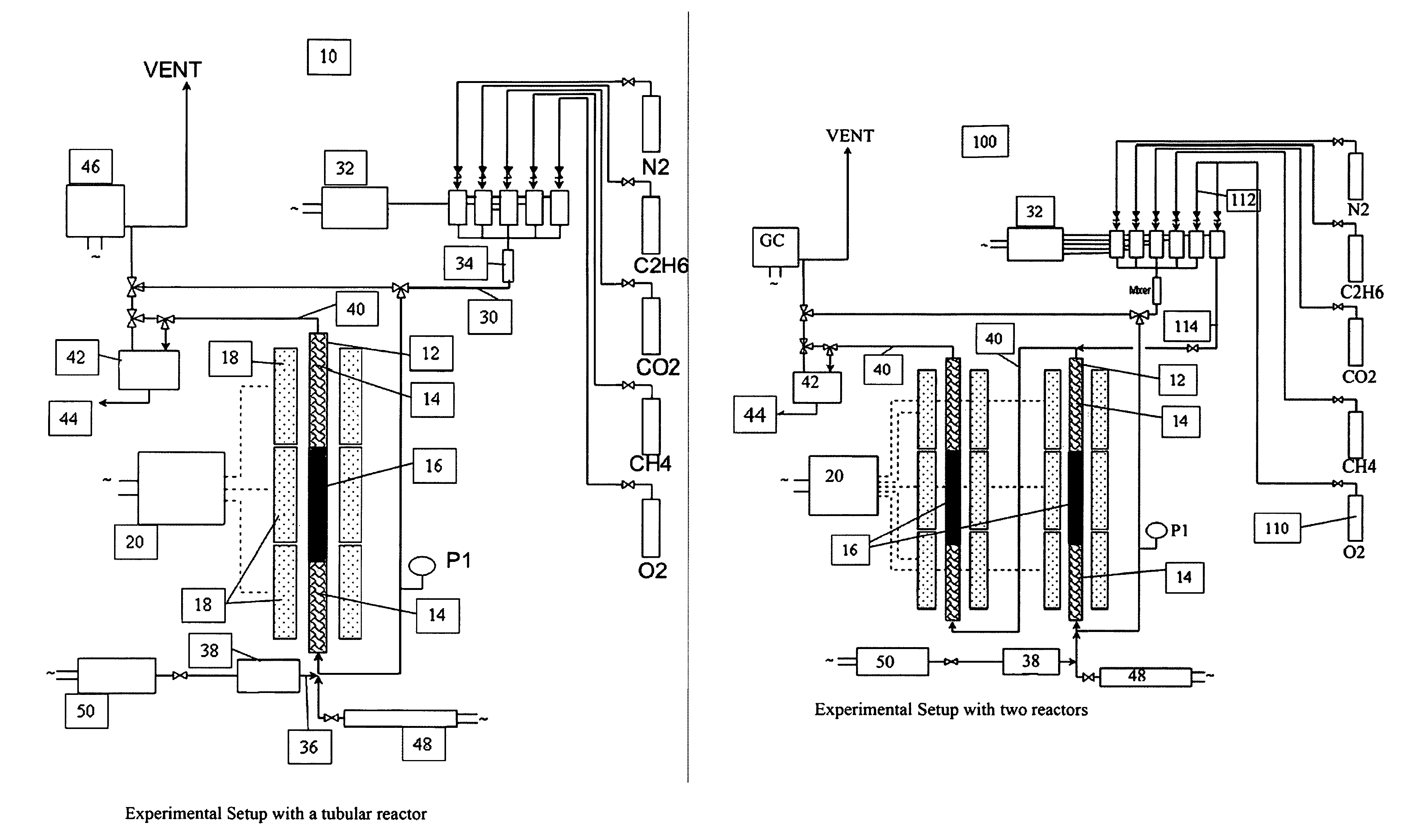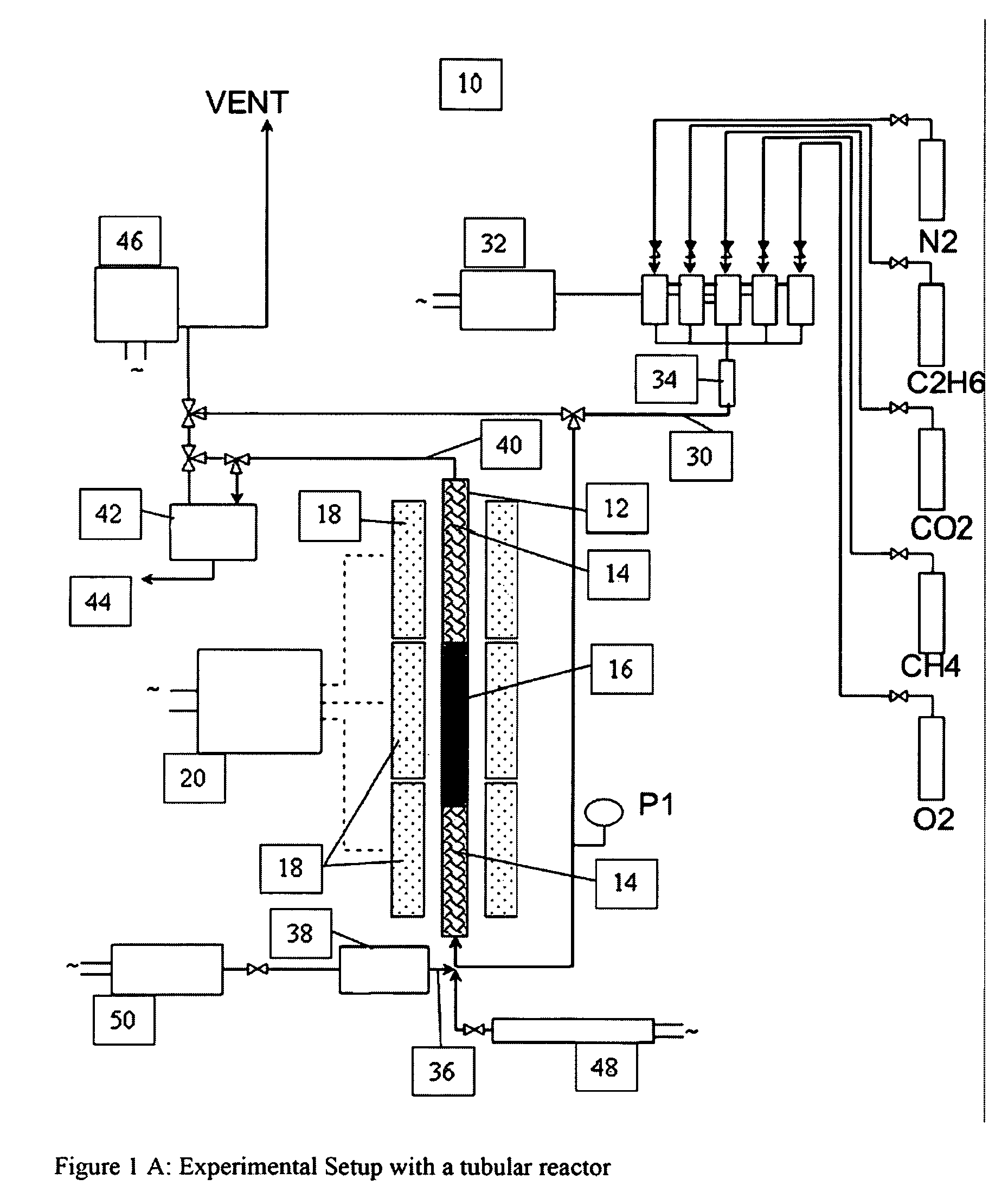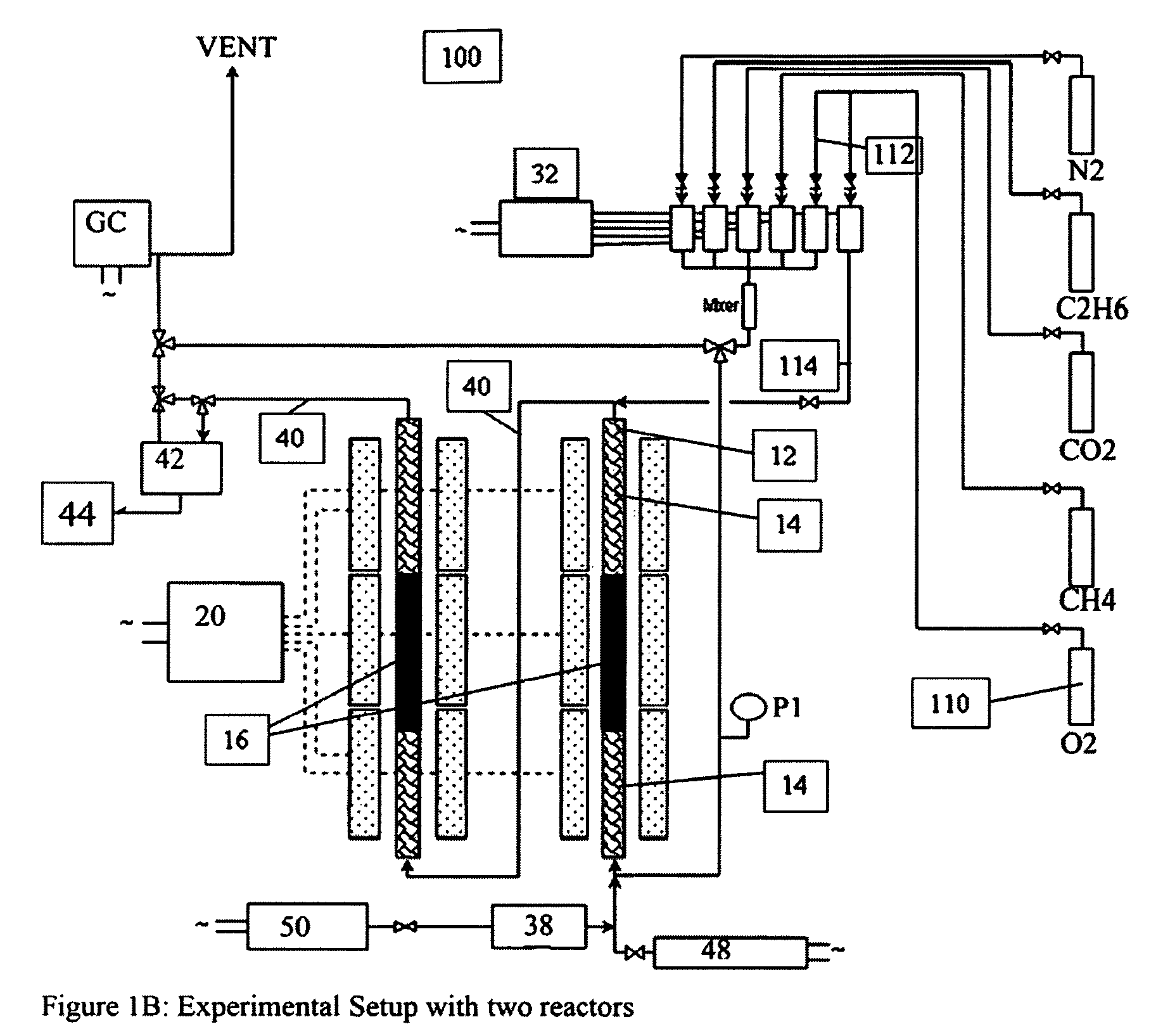Catalyst and method for converting natural gas to higher carbon compounds
a technology of natural gas and compounds, applied in the direction of catalyst activation/preparation, physical/chemical process catalysts, metal/metal-oxide/metal-hydroxide catalysts, etc., can solve the problems of waste of resources, unattractive economic use, and difficulty in utilizing gas resources, etc., to achieve high conversion of methane
- Summary
- Abstract
- Description
- Claims
- Application Information
AI Technical Summary
Benefits of technology
Problems solved by technology
Method used
Image
Examples
example 1
Catalyst Preparation
[0175]A catalyst comprising cobalt, sodium and tungsten was prepared as follows. Into a 500 ml beaker 9 grams ammonium tungstate (99.9% purity from Sigma-Aldrich Co, St. Louis, Mo.) and 1 gram sodium hydroxide (pellets, purity 99.998%, from Sigma-Aldrich Co, St. Louis, Mo.) were dissolved in 200 ml deionized water at a temperature ranging from about 70 degrees C. to about 80 degrees C. In a separate beaker cobalt (II) nitrate hexahydrate (from Sigma-Aldrich Co 99% purity) was dissolved in water at about 70 degrees C. The two dissolved salt solutions were then combined, and 30 grams of manganese (IV) oxide (reagent plus purity, 99% from Aldrich) was added with 10 ml ammonium hydroxide (A.C.S. reagent grade from Sigma-Aldrich Co) to achieve an alkaline pH. The mixture was then transferred to a Pyrex plate and heated for 2-3 hours at about 250 degrees F. (121 degrees C.)
[0176]The resulting catalyst paste is placed in a calcination furnace that is continually purged ...
example 2
Reaction Parameters
[0183]The mixed metal oxide catalysts in the following examples are placed in a tubular reactor with a thermowell (FIGS. 1A, 1C). Some experiments utilized an unlined titanium reactor that was pre-treated to oxidize the internal surface area prior to use.
[0184]FIGS. 1A-1C show a reactor with bottom feeding of the input gases, and where the catalyst bed is configured as three layers i. quartz packing, ii. catalyst, iii. quartz packing.
[0185]A feed gas stream comprising methane, steam, nitrogen as an internal standard and an oxygen-containing gas is contacted with one of the catalysts in a reaction zone maintained at a temperature sufficiently high to effectively produce an effluent stream comprising organic compounds with carbon numbers of 2 or more, un-reacted methane, carbon monoxide, carbon dioxide, hydrogen and the internal standard nitrogen.
[0186]The hydrocarbon feedstock may be any hydrocarbon having a low boiling point, such as methane, natural gas, associat...
example 3
Other Parameters; Definitions
[0193]The following measurement techniques and definitions apply to the examples:[0194]1. Liquid flow rates were metered by use of syringe pumps and / or positive displacement pumps. In each case the pumps were calibrated for the particular flow settings.[0195]2. Gas flow rates were measured with mass flow meters and reported as gas flow rates at 0 degrees C. and 1 atmosphere (101.325 kPa).[0196]3. Composition of the gas feed was calculated based on flow rates determined from the mass flow meters. The gas composition as measured by gas chromatography was also determined to be the same as the composition calculated from the mass flow meters.[0197]4. The composition of the exit gases from the reactor was measured by gas chromatography using a gas chromatograph calibrated with standard gas mixtures. An internal standard of nitrogen was used to calculate the exit flow rate of the gas from the reactor in most cases. However, in some cases a carbon balance was f...
PUM
| Property | Measurement | Unit |
|---|---|---|
| diameter | aaaaa | aaaaa |
| diameter | aaaaa | aaaaa |
| pressure | aaaaa | aaaaa |
Abstract
Description
Claims
Application Information
 Login to View More
Login to View More - R&D
- Intellectual Property
- Life Sciences
- Materials
- Tech Scout
- Unparalleled Data Quality
- Higher Quality Content
- 60% Fewer Hallucinations
Browse by: Latest US Patents, China's latest patents, Technical Efficacy Thesaurus, Application Domain, Technology Topic, Popular Technical Reports.
© 2025 PatSnap. All rights reserved.Legal|Privacy policy|Modern Slavery Act Transparency Statement|Sitemap|About US| Contact US: help@patsnap.com



